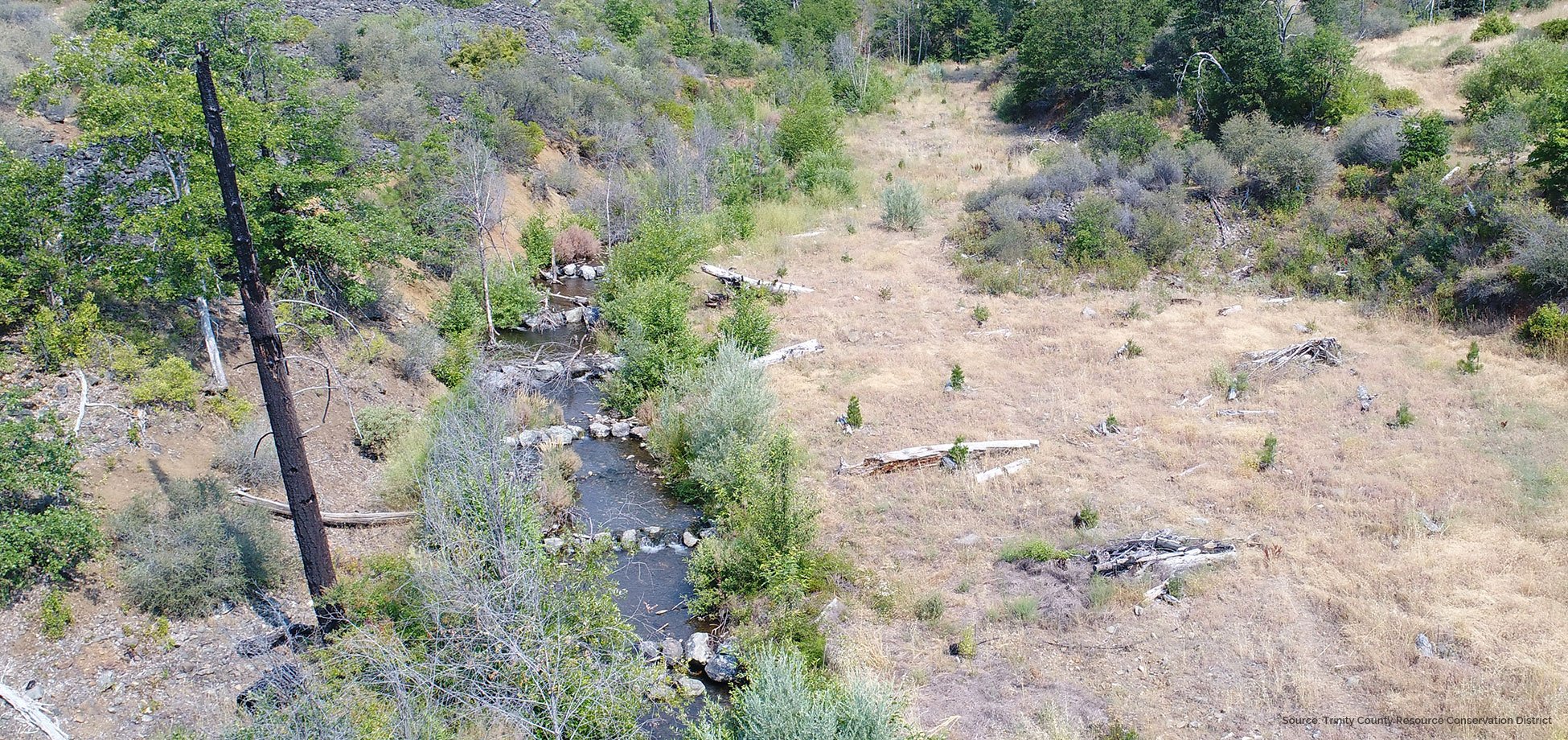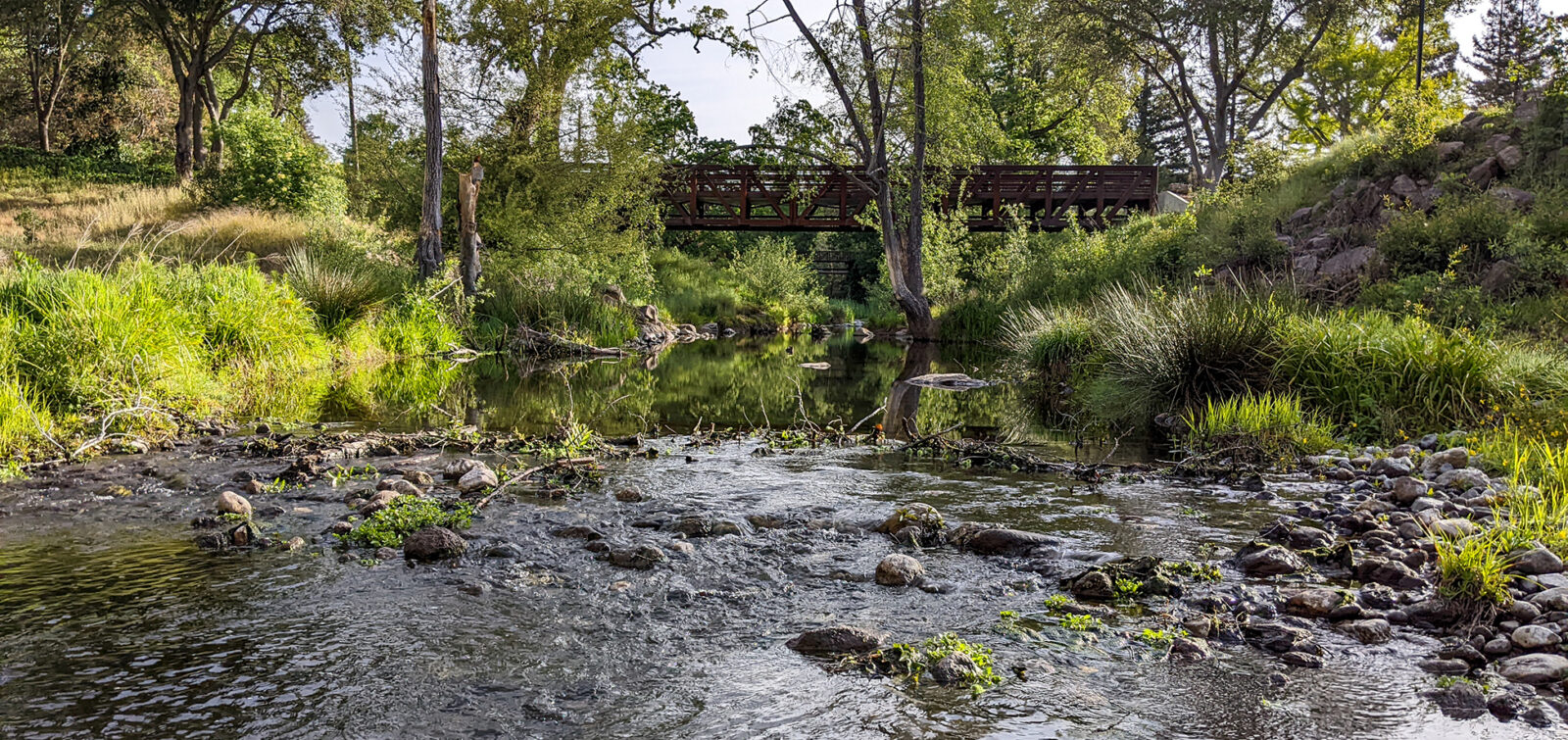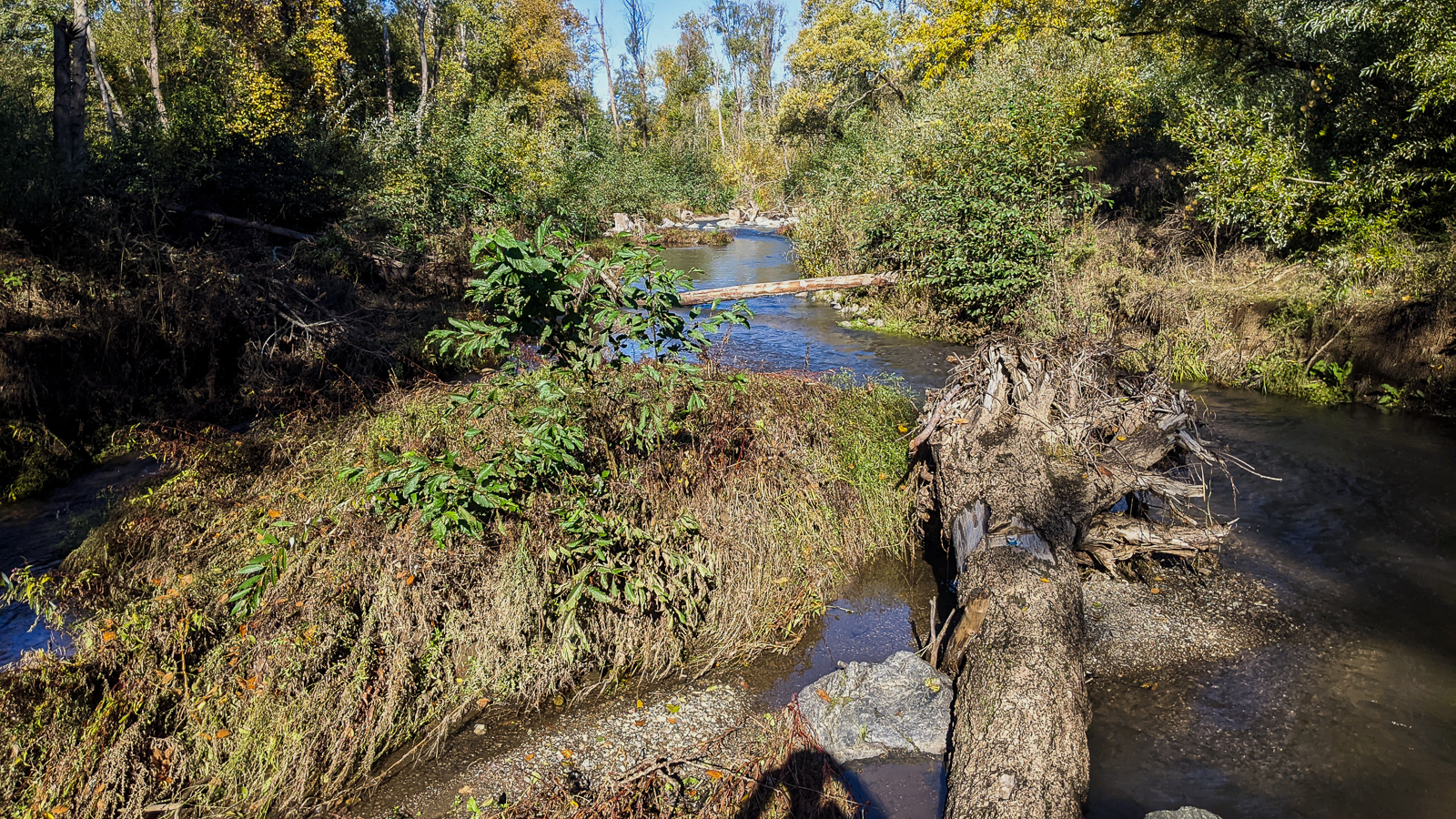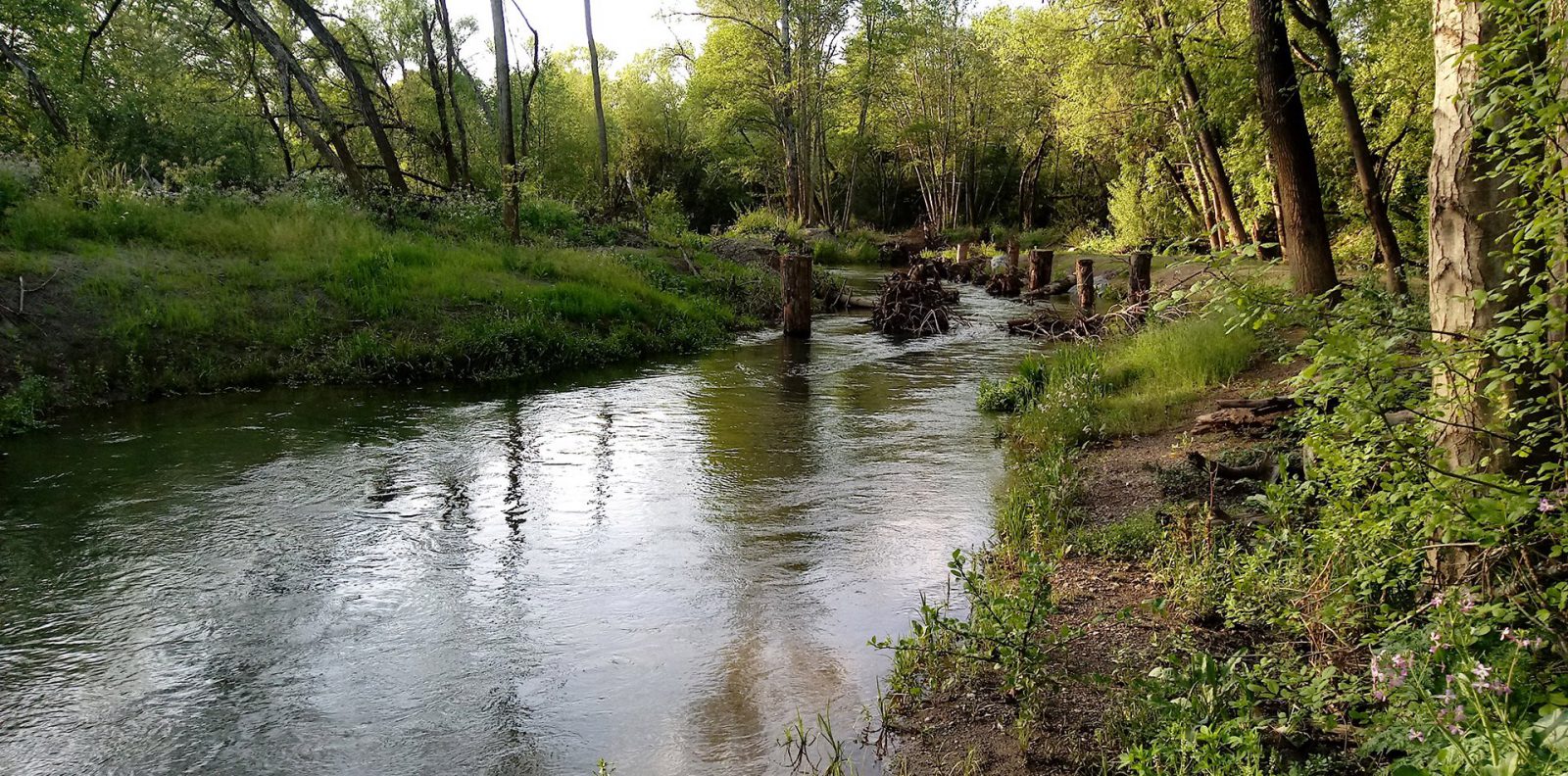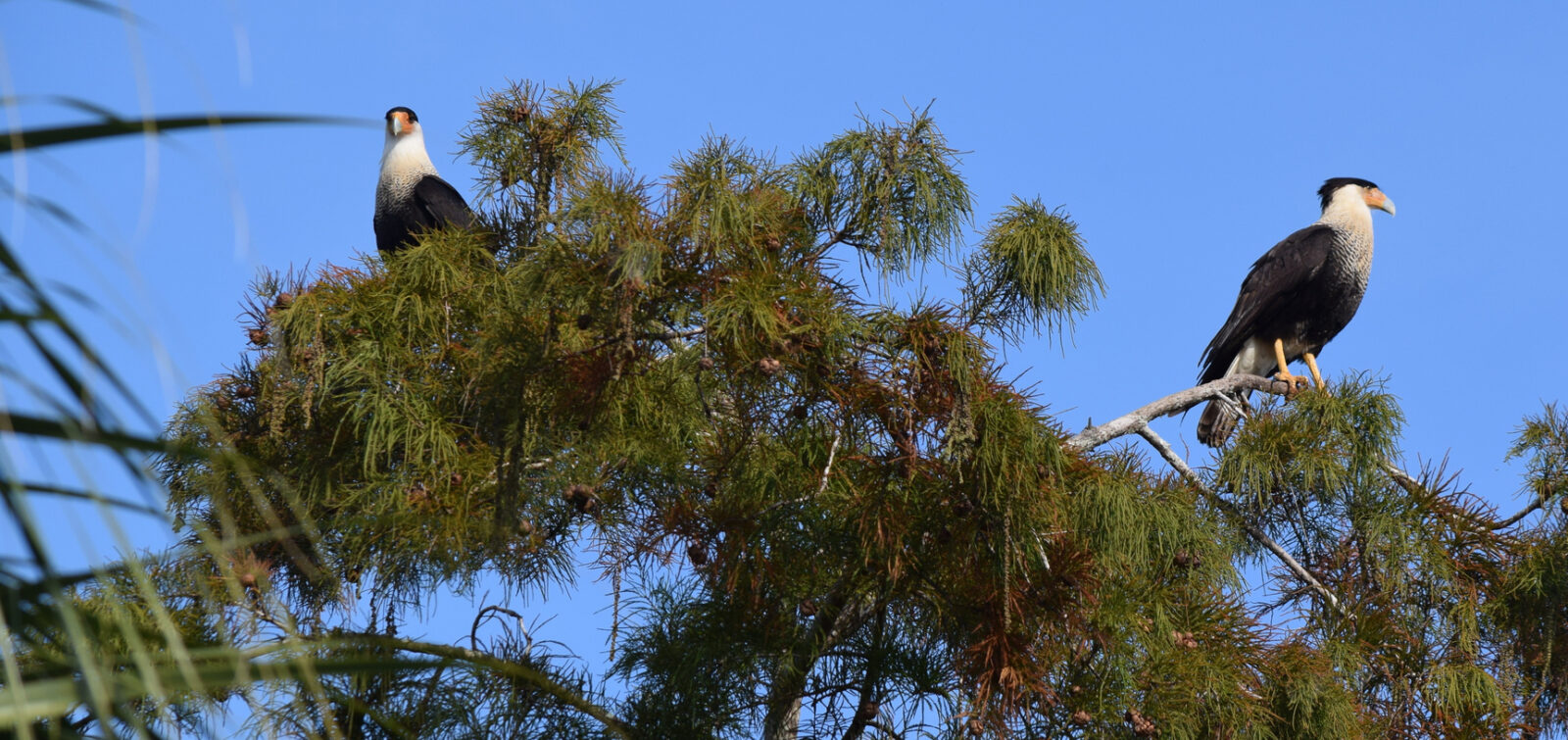A decade ago, ESA fluvial geomorphologists Jason White and Eric Ginney accompanied the Trinity County Resource Conservation District (TCRCD) to the Weaverville Community Forest to assess a highly impaired reach of West Weaver Creek.
West Weaver Creek’s pristine headwaters in the Trinity Alps Wilderness provide valuable habitat for endangered coho salmon in the Trinity River watershed downstream of the Lewiston Dam. However, portions of West Weaver Creek have been severely impacted by past hydraulic mining and recent fires.
Jason and Eric entered into a collaboration with the TCRCD and the US Forest Service that began with assessment of the watershed and culminated in the restoration of a highly degraded reach of West Weaver Creek that had been mined and was completely scoured to bedrock.
In addition to environmental compliance and permitting services, ESA led the design to reconstruct a 1,000-foot section of degraded streambed into a series of natural instream pools with rock features aimed to create habitat complexity, improve fish migration, enhance groundwater-surface water interactions, promote sediment retention, and expand the riparian zone.
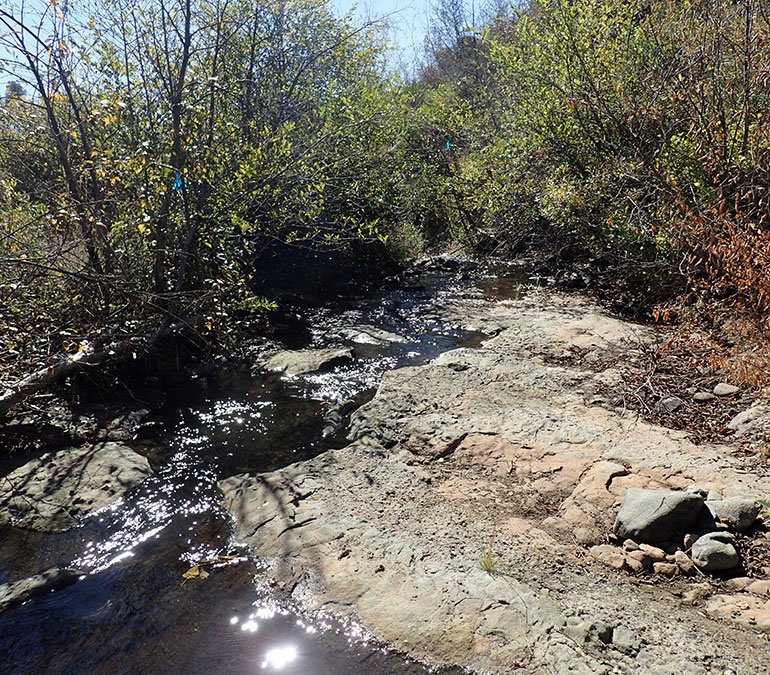
West Weaver Creek in 2015, before ESA’s restoration design was implemented (above) and after in 2020 (below).

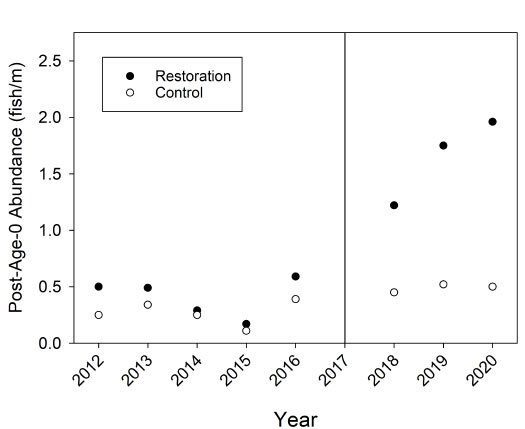
Since construction by McCullough Construction in 2017, the site has seen a dramatic improvement in the riparian and instream habitat conditions. Preliminary results from a current monitoring study by Bret Harvey, a research fish biologist with the US Forest Service, and his team have shown a promising increase in fish residing in the restored reach, as demonstrated in the dot graph at right (source: US Fish Forest Service).
We look forward to seeing this site continue to transform back into a highly functioning stream and riparian corridor.
